Exhibition information
Thomas Florschuetz
Zeitraum
Zeitraum
March 1st - July 26th, 2024
Under the title Zeitraum, Galerie m is showing early body photographs and a photo projection with East Berlin city views by Thomas Florschuetz (*1957 Zwickau).
The multi-part body photographs at the centre of the exhibition are immediately overwhelming in their monumental size, abstraction and formal tension. The viewer's gaze initially concentrates on grasping the photographic images with their different depths of field, the strong close-ups and the structures of surfaces, colours and shapes detached from the motif.
They show hands and wrists from different perspectives. Even though skin and body hair, tendons and folds are recognisable, the motifs defy clear classification. What appears to be clearly visible in one tableau is obscured in the next.
In the four photographs of Untitled (Cross) 03 (1988/2024), a fist can be seen against a black background. The images are rotated and installed in relation to each other so that their shape forms a cross and the fists point to all sides. The work is imbued with the symbolism of gestures, but also the symbolism of the cross, so that layers of meaning flow in that have their origin outside the picture itself. This makes the effect on the viewer all the more complex and individual.
In Untitled (Stranger) 01 (1989/2005) and Untitled - Diptych No. 42/I (1989), foreign bodies seem to protrude from the skin. The clash of object and skin triggers an almost physically palpable discomfort in the viewer. In addition, the significance of the nail within the Passion story is inevitably present.
In the photographs of the Plexus series from the mid-1990s, hands are illuminated. The resulting shapes and lines form an independent visual language, detached from the motif, in which only a few details are reminiscent of the actual underlying subject. Instead, the bright, intense red colour triggers many associations, from microscopic images to billowing embers.
As experimental as Florschuetz's approach has been in the body photographs since the early 1980s, it is just as spontaneous and intuitive in the images shown in the first-ever exhibition of the image projection Gestirn, for which the artist drifted through the cosmos of the streets of East Berlin. In a carefully coordinated sequence, the work shows city views of Prenzlauer Berg in East Berlin - railway stations, streets, facades, courtyards - over the course of just under half an hour. Most of the pictures were taken on 1 May 1985.
For a moment, each image stands on its own before it merges with the following photograph in a slow fade and gradually disappears. There is something atmospheric, documentary and constructive about the photographs at the same time. The viewing time is limited so that the images can never be explored down to the smallest detail. This shortage of time leads to a kind of productive overload. On the one hand, one wanders through the East Berlin of a bygone era and at the same time sees the structure of surfaces, lines and forms that repeatedly emerge in individual images or result from the superimposition of two shots.
Even if what Thomas Florschuetz has in front of his lens in each of the works in the Zeitraum exhibition does not initially appear to have any points of contact, the pictures are united by the artist's own gaze: Florschuetz's investigative, exploratory, curious, but also constructive way of looking.
Thomas Florschuetz was born in Zwickau in 1957 and lives in Berlin. His work was shown in a solo exhibition at the Museum Folkwang's photography collection in Essen in 1987 and can be found in the collection of the Museum of Modern Art in New York, among others. In 2022, the Haus am Waldsee honoured his work with an extensive retrospective, for which a catalogue was also published.
Under the title Zeitraum, Galerie m is showing early body photographs and a photo projection with East Berlin city views by Thomas Florschuetz (*1957 Zwickau).
The multi-part body photographs at the centre of the exhibition are immediately overwhelming in their monumental size, abstraction and formal tension. The viewer's gaze initially concentrates on grasping the photographic images with their different depths of field, the strong close-ups and the structures of surfaces, colours and shapes detached from the motif.
They show hands and wrists from different perspectives. Even though skin and body hair, tendons and folds are recognisable, the motifs defy clear classification. What appears to be clearly visible in one tableau is obscured in the next.
In the four photographs of Untitled (Cross) 03 (1988/2024), a fist can be seen against a black background. The images are rotated and installed in relation to each other so that their shape forms a cross and the fists point to all sides. The work is imbued with the symbolism of gestures, but also the symbolism of the cross, so that layers of meaning flow in that have their origin outside the picture itself. This makes the effect on the viewer all the more complex and individual.
In Untitled (Stranger) 01 (1989/2005) and Untitled - Diptych No. 42/I (1989), foreign bodies seem to protrude from the skin. The clash of object and skin triggers an almost physically palpable discomfort in the viewer. In addition, the significance of the nail within the Passion story is inevitably present.
In the photographs of the Plexus series from the mid-1990s, hands are illuminated. The resulting shapes and lines form an independent visual language, detached from the motif, in which only a few details are reminiscent of the actual underlying subject. Instead, the bright, intense red colour triggers many associations, from microscopic images to billowing embers.
As experimental as Florschuetz's approach has been in the body photographs since the early 1980s, it is just as spontaneous and intuitive in the images shown in the first-ever exhibition of the image projection Gestirn, for which the artist drifted through the cosmos of the streets of East Berlin. In a carefully coordinated sequence, the work shows city views of Prenzlauer Berg in East Berlin - railway stations, streets, facades, courtyards - over the course of just under half an hour. Most of the pictures were taken on 1 May 1985.
For a moment, each image stands on its own before it merges with the following photograph in a slow fade and gradually disappears. There is something atmospheric, documentary and constructive about the photographs at the same time. The viewing time is limited so that the images can never be explored down to the smallest detail. This shortage of time leads to a kind of productive overload. On the one hand, one wanders through the East Berlin of a bygone era and at the same time sees the structure of surfaces, lines and forms that repeatedly emerge in individual images or result from the superimposition of two shots.
Even if what Thomas Florschuetz has in front of his lens in each of the works in the Zeitraum exhibition does not initially appear to have any points of contact, the pictures are united by the artist's own gaze: Florschuetz's investigative, exploratory, curious, but also constructive way of looking.
Thomas Florschuetz was born in Zwickau in 1957 and lives in Berlin. His work was shown in a solo exhibition at the Museum Folkwang's photography collection in Essen in 1987 and can be found in the collection of the Museum of Modern Art in New York, among others. In 2022, the Haus am Waldsee honoured his work with an extensive retrospective, for which a catalogue was also published.
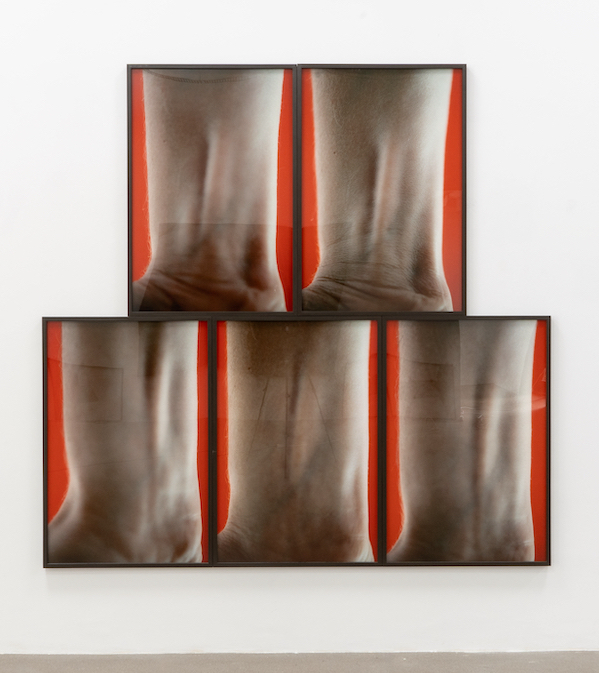
Ohne Titel (Unbekannte Summe) 03, 1992/2005
C-Prints, Diasec, 5 parts, each 107,5 x 72,5 cm
C-Prints, Diasec, 5 parts, each 107,5 x 72,5 cm
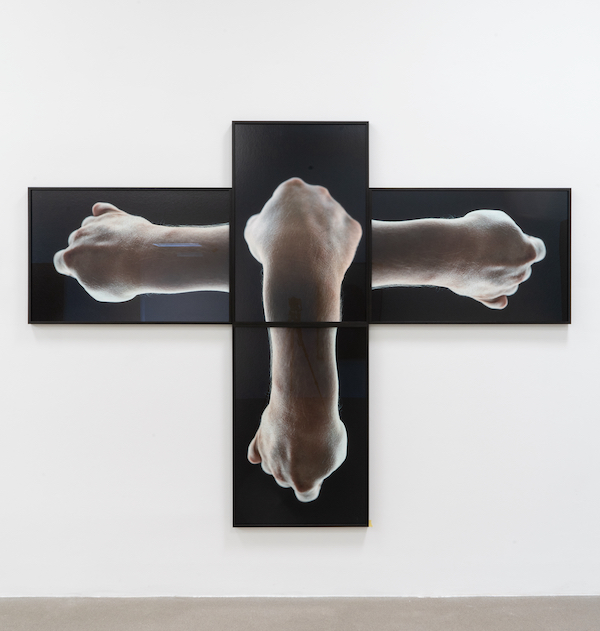
Ohne Titel (Kreuz) 03, 1988/2024
Archival Inkjet Prints, 4 parts, each 107 x 72 cm
Archival Inkjet Prints, 4 parts, each 107 x 72 cm
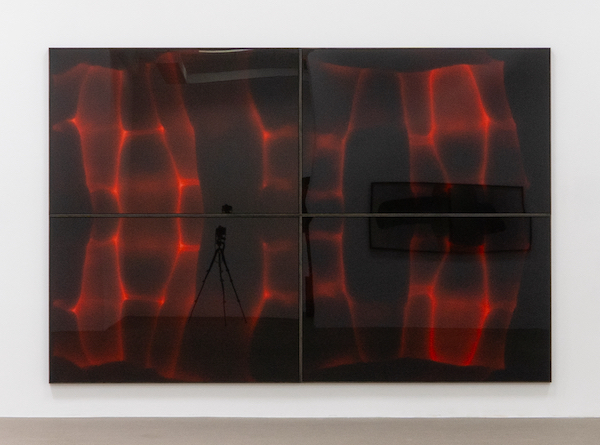
Plexus 07, 1994/2004
C-Prints, Diasec, 4 parts, each 120 x 180 cm
overall dimensions ca. 245 x 365 cm
C-Prints, Diasec, 4 parts, each 120 x 180 cm
overall dimensions ca. 245 x 365 cm
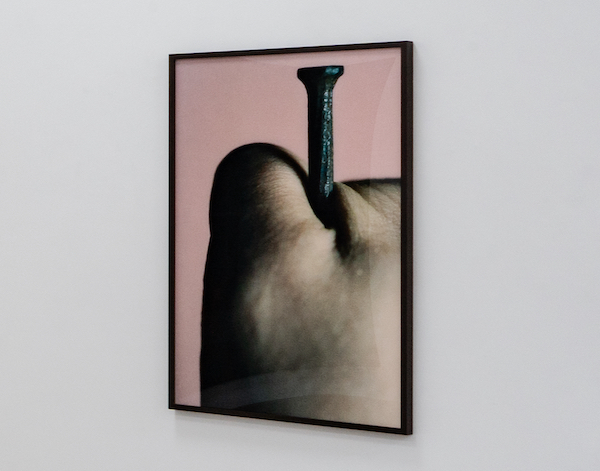
Ohne Titel (Fremder) 01, 1989/2005
C-Print, Diasec, 154 x 104 cm
C-Print, Diasec, 154 x 104 cm
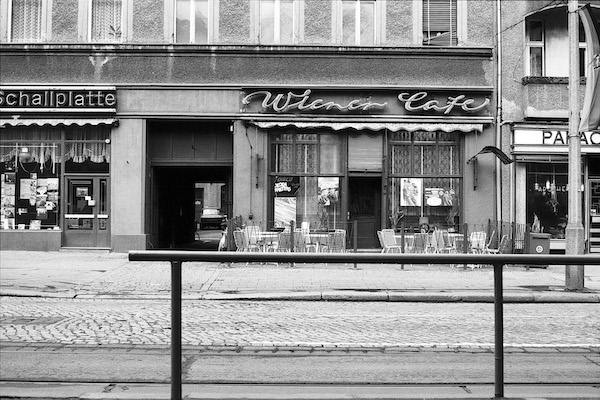
ohne Titel (Preb 85/05), 1985
Archival Inkjet Print, 34 x 49,4 cm
Archival Inkjet Print, 34 x 49,4 cm
